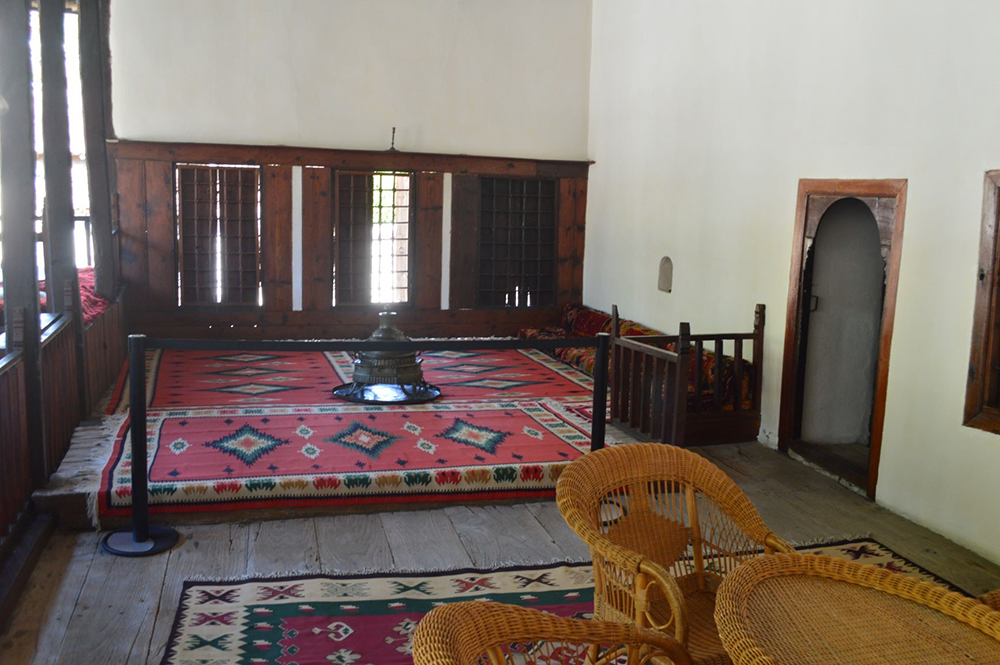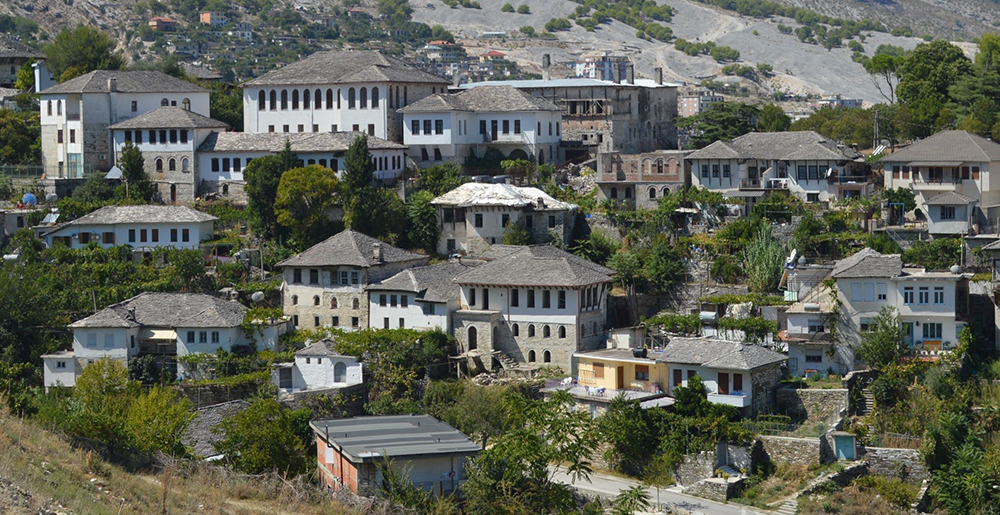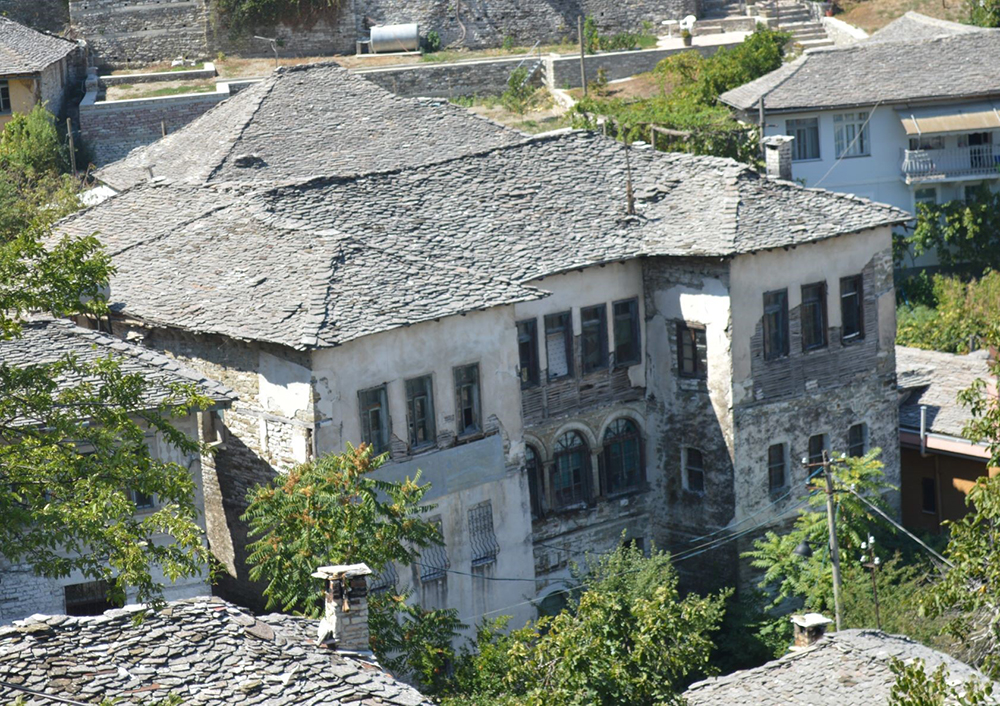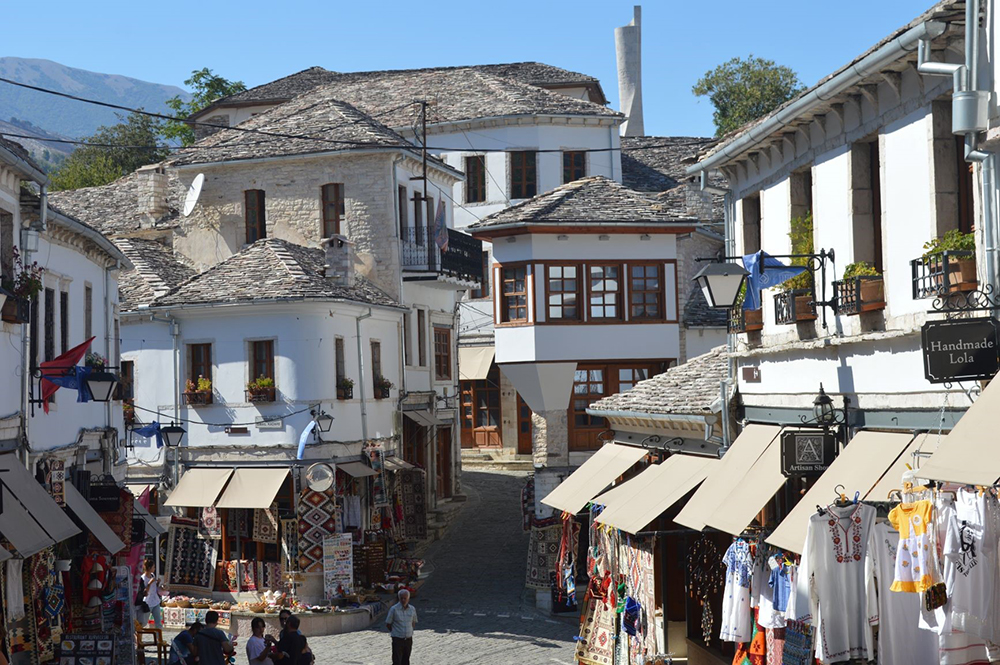When the Balkan peoples began to break away from the Ottoman Empire and form their own nation-states, the preservation of the Ottoman architectural heritage was their last concern. In their desire to appear as modern as possible, the newly formed states adopted Central European cultural models, so public buildings from the Ottoman period were either demolished or neglected and left to decay. The attitude towards residential buildings was somewhat different. For some time, the newly formed elite liked to live in elegant “lodges” of oriental style, and within the broader program of formation of national traditions, in which “de-Ottomanization” played a major role, the idea of a traditional house, supposedly typical of a certain people, was extended. Professional literature described “traditional Macedonian houses”, “Northern Greek houses” or “Bulgarian Revival houses”, but the differences between them were unconvincing, and the alleged connection with the national village tradition was rather vague. Over time, a large part of the autochthonous buildings fell into disrepair, which was replaced by the popular construction of traditional “ethno-villages” with inns, chardaks, divankhanas and half-authentic hajduk huts.
In this respect, the circumstances were different in Albania. The national state was formed relatively late, and religious differences were not abused. Also, the economic underdevelopment, typical of the Balkans, lasted longer, and all this contributed to the preservation of the old Balkan architecture. This is especially true for two mythical, mountain towns that have remained practically untouched since Ottoman times, and today are under the protection of UNESCO as world cultural heritage.
These are the cities of Berat and Gjirokastra.
Berat
Berat is a city of ancient origin, and in the Middle Ages until the 17th and 18th centuries. century, it was known by the Slavic name Belgrad, from which the current name originates. To distinguish it from the more famous Belgrade, the Venetians called it Belgrado di Romania, and the Turks Belgrad and Arnavud.
The first information about the attractive appearance of that city and the first illustrations came from a few English adventurers. Among them were the archaeologist, architect and writer C.R. Cockerell, and writer, painter and composer Edward Lear, who is something of a local legend in Berat. In contrast to them, Lord Byron failed to enter Berat, because at the time of his epic journey, the lord of Berat, Ibrahim Pasha, was at war with Ali Pasha Tepelen, Byron’s host.
In the 18th and 19th centuries, the inhabitants of that mountain town built their houses on the steep slopes facing the Osum River, in a dense layout, leaving only narrow, winding, cobbled passages with stairs between the houses.

Those attractive, Ottoman-Balkan houses, which brought Berat its present reputation, were built by master masons of the time, keeping a single project in mind with all the necessary details, which they then adapted to the actual geometric conditions on the ground. That project of a two-story house with a veranda, which they learned from their fathers or other masters, was changed, from generation to generation, by making small changes in accordance with changes in lifestyle. The lower floor, the ground floor, is built of stone, sometimes reinforced with a wooden frame, for increased resistance to earthquakes, and has very few openings. In general, there are warehouses, sometimes domestic animals, but often there is no room for anything except for a staircase.

Family life takes place on the upper floor, built of a lighter, wooden structure, whose architectural solution has changed over time, and has its origins in the traditional čardak, which is a word with a changing regional meaning, but in Albania it primarily means a wooden veranda on the highest floor. That wooden veranda – čardak, in the initial period was only covered, and later it got closed spaces, and even later, even in most Berat houses, all rooms were closed with a characteristic series of large windows.

One of the largest traditional houses in the Mangalam district, the most attractive part of Berat, was built exactly at the time when the transformation of the veranda was taking place, so it is an excellent architectural example and was deservedly chosen for the building of the Ethnological Museum.
Religious buildings in Berat, although diverse, attract less attention than residential ones, and in a country of official atheism, they were not adequately maintained. With the funds of the Turkish government, some religious buildings are being renovated today, including the Sultan’s Mosque on the central square in Mangalam. The guard will stop you if you head towards an interesting object behind the mosque, but as soon as you show that you recognize the dervish tekke, he sees you as an interested connoisseur, not only letting you in, but also becoming a very informative and even humorous guide. Tekija belonged to the Sufi Halveta Dervish order. It is, by the way, the most famous tekke in Albania, and in itself is a first-class cultural monument, known above all for its interior decoration and ceiling decoration, which is currently being reconstructed. Another tekke from Berat, on the outskirts of the city, architecturally uninteresting, belonged to the Rifai dervishes, who are famous for their bizarre, sometimes terrifying rituals.
Apart from the equally represented Orthodox Christians and Muslims, in the Ottoman period there was also a significant Jewish community in the city, and there were also crypto-Jews, whose symbols can be seen among the decorations on the facades and doors of houses, and also a certain number of followers of Sabatai Zevi, for whom some still believe that he is the true messiah, even though he had to convert to Islam under the pressure of the sultan. Some researchers, although without material evidence, claim that his grave is in Berat, in the aforementioned Halvetian tekke. During the Holocaust, Albania was the most successful European country in protecting its Jews. Nationalists and communists and collaborationist authorities were united in that mission, otherwise fiercely conflicted on all other issues. Moreover, Albania met the end of the war with a many times larger number of Jews compared to its beginning, because endangered Jews from occupied Europe moved there, and all of them were saved in hard-to-reach mountain places, mostly in Berat.
For lovers of old Balkan architecture, Berat is an unmissable address, and its advantages include the proximity of Gyrocastra, another Albanian city-museum, where you can see somewhat different Balkan houses.
Gyrocastra
As in Berat, a class of richer citizens was formed in the 18th and 19th centuries in Gyrocastra, for whom skilled Macedonian masons from the Debar region built houses in a traditional style, bigger and more beautiful, in accordance with the wealth and reputation of the host. Those houses, although they are also an evolution of the house with a veranda, are different from those in Berat. Houses in Berat have two floors, and a typical house of a rich family from Jirokastra has three, of which the lower two are usually made of stone, less often of brick, and the highest floor, created by the transformation of the attic, has a wooden structure, a series of large windows, and infill of adobe wicker and clay. Canopies are large and sometimes have to be supported by rafters.

Doxats, which are mandatory in Berat, were not popular in Gjirokastra. In Berat, the roof covering is a semicircular “Turkish” tile, and in Gjirokastra, unprocessed stone shingles, i.e. natural slate, are used, so the city’s roofs are gray.
The two lower floors have a high floor height and are reminiscent of another famous Albanian tradition, characteristic of cities in the north. These are the so-called towers, high stone houses, with small openings, adapted for armed defense, very suitable in cases of unresolved blood feud. Sometimes this is also the case in Gjirokastra, where blood feuds were rare, but more often large, beautifully shaped windows were installed instead of small openings. All in all, the most attractive houses in Gjirokastra can be typical oriental-Balkan, and can also have a dose of discreet Tuscan flair.

Regardless of their architectural values, both Berat and Gyrocastra have a special place in Albanian history. In fact, it can be said that their specific architecture is one of the manifestations of their position in the mountainous, hard-to-reach interior of the country, far from global influences, where, at least according to widespread belief, the mythical ideals of knightly honor, given words and heroic ethics still apply.

In 1923, the autocephalous Albanian Orthodox Church was founded in Berat, and in 1944, in that city, the partisan leader Enver Hoxha proclaimed the provisional government and the formation of a new Albania.
Two of the most famous Albanians of the twentieth century – Enver Hoxha and Ismail Kadare – were born in Gyrocastra, in similar Muslim bourgeois families and in close contact with dervishes of the Bektashi order. Later, one of them became a communist dictator and the other a celebrated novelist. Today, the houses where they spent their childhood are accessible to visitors, and Hodža’s house has, moreover, been turned into an Ethnographic Museum.
The relationship between these two men has not been fully understood. In the country of the harshest dictatorship, where any deviation from the set party goals was harshly punished, Kadare wrote allegorical novels in which the themes were precisely the detours of totalitarianism.
It is not entirely clear why this was tolerated. It is known that Enver Hoxha’s regime fiercely knew how to humiliate disobedient writers. The young, talented Musine Kokalari spent eighteen years in prison, and then she cleaned the streets in a province until she died in complete poverty. The poet Sejful Malješov served twenty years in prison, and after that he worked as a manual laborer in a warehouse and until his death he did not speak a single word, because no one was allowed to talk to him. Only two agents of the Sigurimi, the infamous secret service, came to his funeral. Their report: “He is indeed dead” and two illegible signatures.
Kadare knew about it, or at least could have known. During this time, his novels would occasionally be banned, but he personally was not seriously threatened, and was even a member of Parliament for a while. Did he outsmart Hoxha’s censorship with his metaphors, or did the cunning dictator abuse him for the purposes of internal political propaganda? Was there some secret agreement or did the old fox find a weak point in the character of the cruel dictator, who himself had literary ambitions?
We cannot know everything. Balkan cities have their secrets

